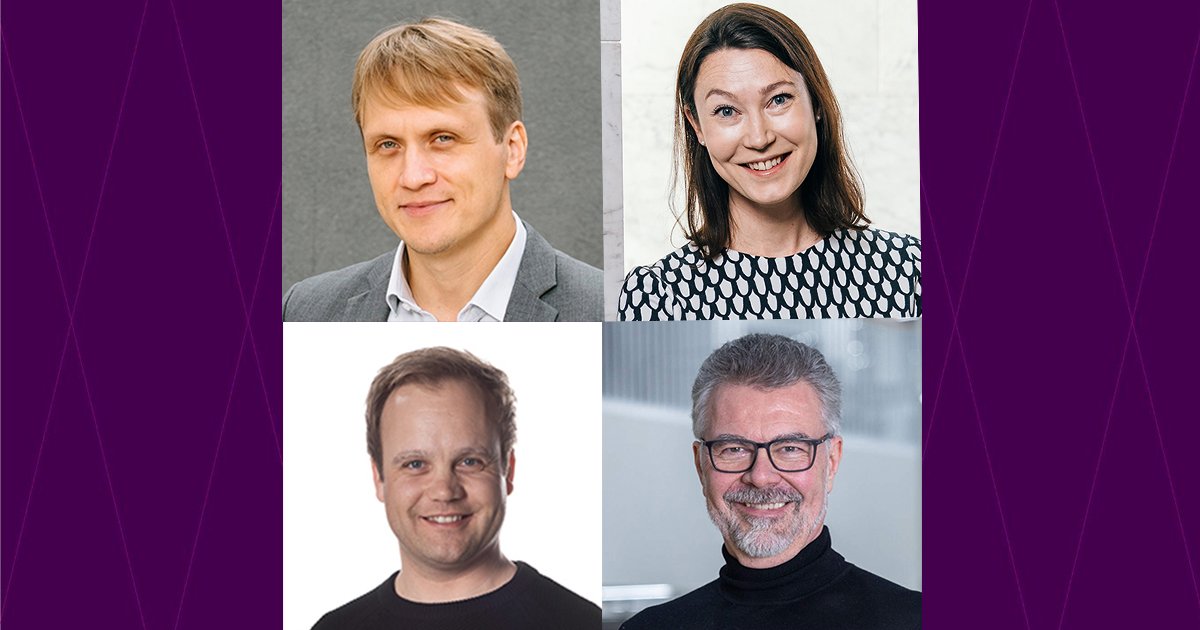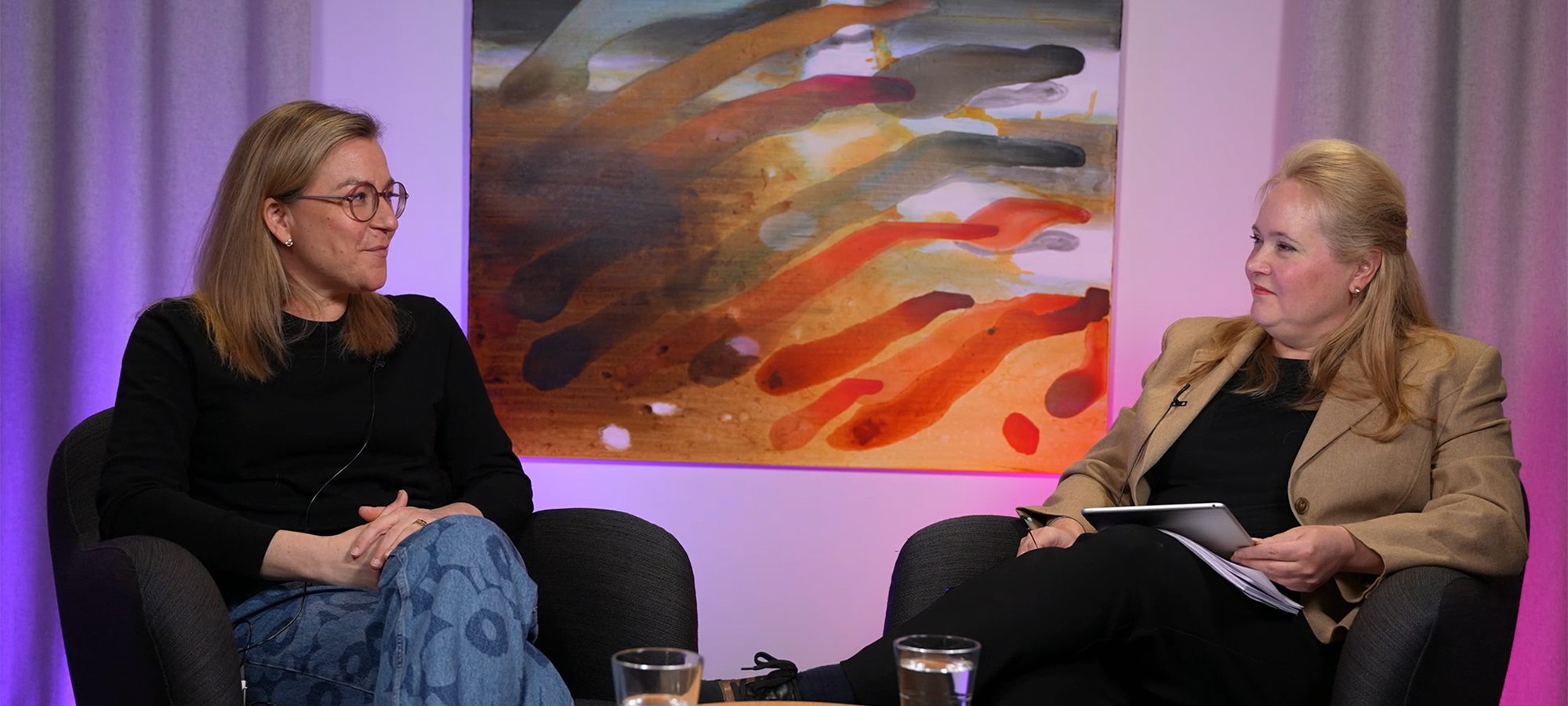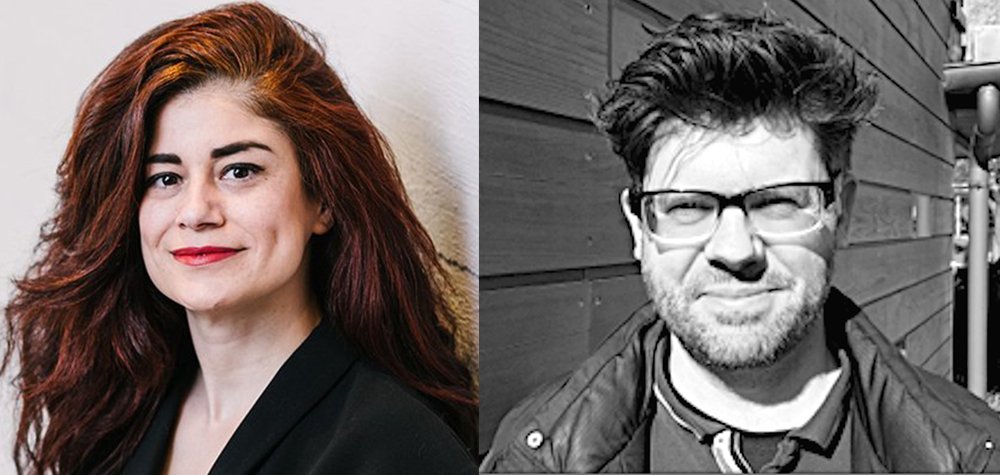Future of Everything - What Do the Surprises That Life Throws Mean for Business?
How can we gain a grip on the future when everything is wavering? Journalist Annukka Oksanen talked to four experts, who recommend tools for taking hold of a future of unknowns.
Annukka Oksanen, 05.11.2021
|Long Forms
What changes when cars no longer need a combustion engine? What are people searching or escaping when they relocate? Who should you be letting into your company’s data warehouse? What can we learn from the great toilet paper grab of 2020?
It is difficult to see the important from the unimportant when charging full speed ahead. And when reaching some sort of future vision at the end of a bout of strategy work, life can throw its surprises, like the horrors of a pandemic. What does it all mean for business?
It means more for some sectors than for others. But everyone needs to get onboard the fact that the pandemic won’t be the last uncertainty of its kind.
Volcanic eruptions, unrest, cargo ships blocking channels, and pandemics will be cropping up to disrupt the painstakingly drawn charts of strategy teams also in the future. In other words, interruptions must not be brushed off without an analysis.
The type and duration of the changes brought on by the virus are not yet known.
For one thing, risk awareness will increase, which can lead to far-reaching changes in day-to-day business. The way companies are already organizing their value chains is one concrete example. Companies with a strong local presence are already bringing their subcontractor chains closer to home and their main market with the risk of cargo traffic coming to a halt looming in the background. Meanwhile global companies may start ditching their huge global production centers in favor of several regional microstructures instead. This way they can serve various market areas through their own local systems in the event of closing borders.
Regional changes are just one example of all the current buzz. How can we gain a grip on the future when everything is wavering?
Urbanization or off to the countryside – which one wins?
Mikko Laukkanen
Academic Director at Aalto EE
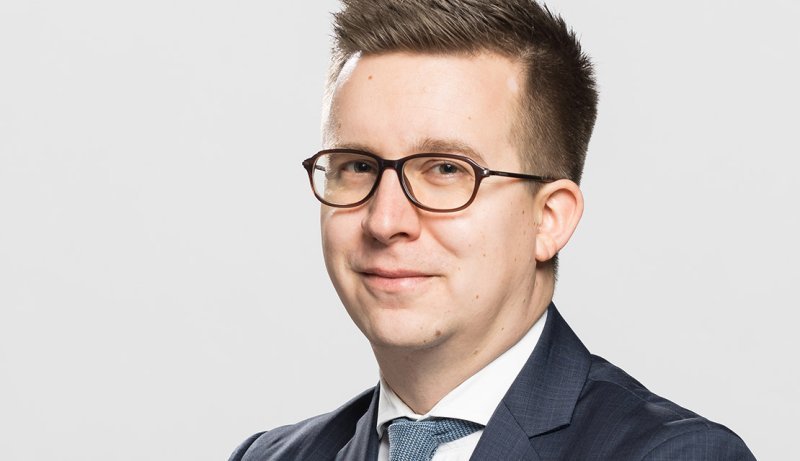
When two or more rivers converge, the flowing bodies of water merge into a single, downstream channel. In geography, this is known as confluence.
Like rivers, trends can collide and continue their journey together. Two confluent streams can be stronger than a single flowing body, but also turn into muddy water. Merging trends, too, can result in murky vision.
“Colliding trends change each other”, says Mikko Laukkanen, Academic Director at Aalto University Executive Education.
It is Laukkanen’s job to envision how Aalto EE programs will best serve participants as well as to steer organizational leaders to recognize what matters in times of change.
There are two distinct trends at play. On the one hand, people want more space. At the same time, apartment prices in the city center rose."
He mentions housing and the current Finnish summer cottage boom as an example. Remote working during Covid times has changed people’s daily lives; many relocated to their summer cottages to work or started to consider a bigger home. And as the period of remote working got longer, we began to want more from our home offices.
“There are two distinct trends at play. On the one hand, people want more space. At the same time, apartment prices in the city center rose. It’s likely that once the pandemic is over, we will be keen to make use of the services on offer outside our homes. It’s hard to believe we’d all want to live in the middle of nowhere and stay there when we no longer have to. I’m pretty certain we’ll want to be going to cafés, terraces, and concerts.”
Relocating to a quieter area and urbanization are polar opposites, yet both trends are real. It begs to question: Which matters more? Which trend has more effect?
“Urbanization is more or less a law of nature, which is sure to continue in one form or another. Wanting an extra room won’t be reversing this major trend, but it will have an effect. Developments within cities could change. As a business leader I could think that without Covid, the urbanization trend would have been stronger last year. In other words, I can say I believe in that major trend”, Laukkanen highlights.
Urbanization is a megatrend on a global scale with new metropolises and even megapolises continuously springing up in Asia and Africa. The smaller stream has an impact but does not steer the larger river into an entirely new channel.
Also, trends have different timespans, meaning they cannot necessarily be bundled together. Often a certain trend starts to run the show.
Laukkanen continues the thread of thought. Cocooning at home and an appreciation of gardening and leisure time have been on a rise all over the world. In Finland, the trend is known as the Nurmijärvi phenomenon, named after the small rural municipality just outside capital city Helsinki. The media is awash with stories about people escaping the rat race. Home cultivation is gaining popularity. Overseas travel is diminishing.
“There will be a big bubble after Covid, but perhaps we’ll start to experience “flight shame” also in Finland one day.”
Remote working is likely to be more popular in five years than in pre-Covid times, but there are only so many online meetings we can take.
“Where will all this lead? We want time together – a chance to meet people at work. But how will our time together change?” Laukkanen continues with his answer:
“As we value our time together more than before, also our expectations will be raised.”
Returning to the office is not what is so interesting, but the way our time together at work will change. Management coaching will not happen over zoom in the future either because it would be tedious.
As we value our time together more than before, also our expectations will be raised."
“But if you are getting clients or colleagues together at a conference venue, the content needs to change. It cannot be something you could just as well arrange over zoom.”
Live get-togethers will be a new luxury. Having to travel to a meeting is expensive, rare, time-consuming, and causes carbon emissions. We want more from live meetings than to stare at a flip chart at an airport hotel like in pre-Covid times. We
want more both from the content and the location.
“If I was running a conference hotel next to Frankfurt airport, I’d be worried.”
Similar chains of thought can be applied to any industry. Begin by thinking about the changes that will strengthen and stay. Then ask what you can influence yourself.
“You could invite a consultant over to announce the current trends every day if you wish. Sustainability is said to be a trend. It sure is, but you cannot build on observation alone.”
What is sustainability exactly, and what does it mean to different people and your own stakeholders? You need to land into it if it were, taking time to wonder and look around in peace.
Next, you need to dig around and figure out how the rising sustainability trend will affect your own operations. It requires an in-depth understanding of both your operations and the trend. The director’s next step is to take these observations and build a convincing whole.
With everyone staring at the same market data on sustainability, the data alone will not create competitive advantage. But knowing how to digest the data and adjust it to your own business will.
“The question that matters is what it will affect.”
Laukkanen mentions digitalization as another example. For many, it meant adopting a new interface and integrating their former business along with its former principles into it. This rings true for instance in the media and banking sectors.
“They dive into a new technology without thinking about what it will change. Then the new interface changes the customer’s relationship to the product itself.”
For a long time, banks were offering the same or slightly more limited services online than at the branch. Developing online services in line with the principles of digitalization took them years.
“What are the connected trends, what effect do they have on each other and development, and what happens when they collide? How does the collision affect the functioning of the market and consumer behavior, and what could be the long-term impact?” These are some of the questions Laukkanen raises when coaching leaders. “It takes quite a bit of work to find the answers.” According to Laukkanen, Finns understand the reasons for their success “fairly badly”.
“There’s no time or interest to think about why the world is the way it is. Instead of sticking to one’s bubble, it’s important to try and figure why others think the way they do.”
Laukkanen mentions that sometimes people wonder why they should be interested in the first place. ”You need to be interested in everything! It’s the only way to improve your perspective and general knowledge.”
According to Laukkanen, general knowledge is a key competence for grasping what is connected and what is not.
“Many Brits working in the City of London have a degree in art history or literature, whereas their Finnish counterparts have studied finance. Finance is easy enough to learn on the job, but it’s harder to catch up on general knowledge. It creates a rather boring worldview.”
As a ‘nation of engineers’, Finns tend to default to recruiting engineers and finance graduates. All respect to them, but homogeneity always brings its risks. In other parts of the world, recruiters have been interested in people educated in humanities and social sciences or with some other background for a long time.
“Otherwise people’s world equals the latest book they read at the airport. They are gullible to however that book presents the world. It’s a biggie that stems from a lack of sophistication. A good general understanding puts things into perspective.”
TikTok teens are the middle-aged customers of the future
Antti-Jussi Tahvanainen
Manager, Innovation Policy at the Finnish Forest Industries Federation
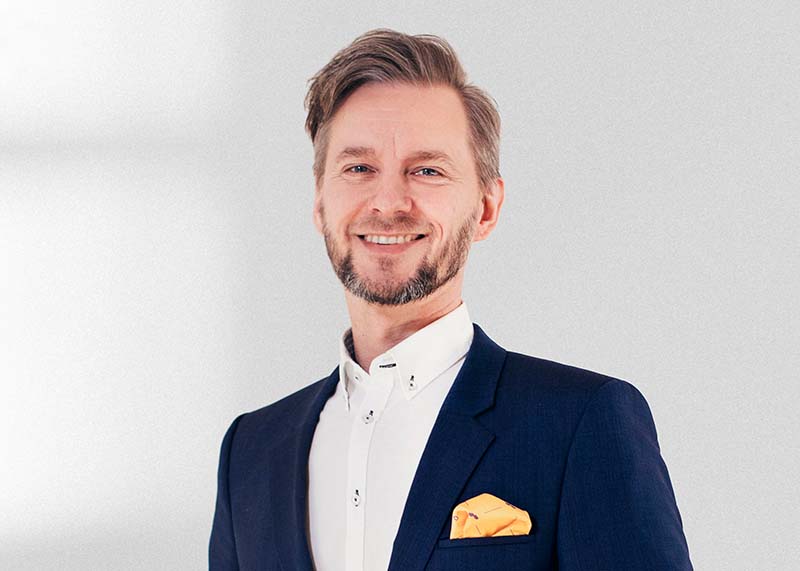
Traditional, accounting-based strategy work involves a business analyzing its own operations, environment, and competition with a timespan of a few years. Strategic foresight, on the other hand, is about glimpsing into the world beyond the horizon, with a lengthier timespan and broader perspective.
Antti-Jussi Tahvanainen is the Innovation Policy Manager at the Finnish Forest Industries Federation, a visiting lecturer at Aalto EE, and an executive consultant. He believes the two methods complement each other.
Strategic foresight means taking an active grip on the future. It allows a company to exert more influence than traditional strategic planning.
“Instead of the classic notion of trying to adapt to the future, we take it into our own hands and aim to shape it into what we want.”
Sounds somewhat grandiose. Maybe an example could help: the automotive industry is case in point of a sector where strategic foresight can help outline fundamental changes.
It is no surprise that completely new competition is entering the market."
The core competence of the automotive industry has traditionally revolved around the internal combustion engine. Rivals sought to stand out through quality and to some degree through design, but mainly through their combustion engine technology.
Now the car sector is turning electric. “It has meant ditching their entire core competence”, Tahvanainen describes. “Suddenly it’s all about A.I., radar technology, and the digital side. It is no surprise that completely new competition is entering the market.”
Tesla is the mega celeb among newcomers, but by no means alone; there’s Rivian, Revel, Hyliion, Polestar… New electric car brands are jumping on the bandwagon at an accelerating pace.
At the same time, autonomous vehicles, driverless cars, are advancing leaps and bounds.
“Social and psychological innovations are emerging. According to statistic, autonomous control is safer than human control. Yet it will take plenty of planning to make people calm and confident.”
In other words, strategic foresight involves questioning everything. Whether your core competence will still be relevant 10–15 years from now is a tough question to face. It is why Tahvanainen believes that a positive outlook that seeks potential instead of threats is vital. It means looking beyond core competences.
“For many companies, going beyond what they know best is a tough “make it or break it” issue.”
To make things even harder on yourself, try to figure out what your future customers will be like. How will generation Z act at a car dealer in the future – the same people who mock today’s almost middle-aged millennials for their skinny jeans and side partings?
Tahvanainen’s reply is reassuring. “Humans are the most predictable – studies show that the values of different generations are pretty stable.”
Our basic values and outlook on life tend to stay the same, but behaviors can change a great deal.
In other words: to envision the future ten years from now with 45-year-olds as your target market for selling cars, look at today’s 35-year-olds no matter how different they seem from your current customers. Then start analyzing how they might behave in a decade.
Education comes as a given for generation X, while it is not as important to millennials. They are also less family-oriented than previous generations. How will this value shift reflect in their consumer behavior? How about the younger generations, who are more social and used to sharing their lives on social media?
Does it make sense to develop family cars anymore? Will these people still want to get around, or are the digi natives happy with a pair of virtual glasses to take in the Sydney New Year’s fireworks?"
“Does it make sense to develop family cars anymore? Will these people still want to get around, or are the digi natives happy with a pair of virtual glasses to take in the Sydney New Year’s fireworks?” Tahvanainen lists.
“I always begin with individuals. Together they create the market.”
The time scope for strategic foresight depends on the sector. Foresight must always be adjusted to the planning cycle.
The automotive sector has been planning for the future three car models, i.e., fifteen years ahead, which has given enough time to adjust the production and value chain.
Another way strategic insight differs from traditional strategic planning is by who is involved. Tahvanainen is all for including people from outside the box right from the start, such as customers of customers.
“It’s hard to create something new in a vacuum or old, familiar setup. It takes cross-pollination. New things are born when values and ideas from the outside collide with our own.”
Strategic foresight requires a more creative and active attitude than the traditional strategy process. The further into the future you set your sights, the more proactive you need to be, as there is less relevant data available than when analyzing the immediate future.
“It’s no rocket science, although you do need specific tools for the creative process and forward-driving discussions. Leadership has a bigger, more responsible role than in a planning-based system.”
A bigger change transforms our notion of reality and factors that define operations. “Trying to figure out unknown unknowns is a major endeavor.”
Creativity is not fiction; strategic foresight is strictly based on facts. “It is not about creating a fantasy world. There is no place for assumptions. Generational profiling, for instance, is based on thousands upon thousands of cross-continental interviews. Even the most creative tools based on human understanding are data-driven.”
Company boundaries dissolve in a data economy
Tua Huomo
Executive Vice President, Sustainable Products and Materials, VTT Technical Research Centre of Finland
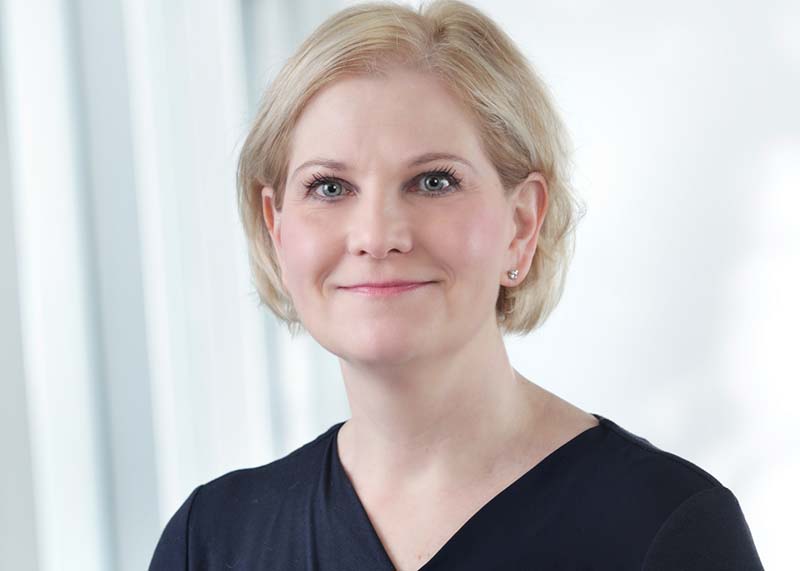
Where company boundaries could once be drawn around its HQ and plot of land, they now float amorphously in cyberspace. It creates completely new partnership potential.
Understanding, managing, and integrating their own data are increasingly important competitive factors for companies. Without an in-depth understanding of their own data, companies are unable to determine how digitally independent they are. What data should we keep to ourselves and what would be useful to share? What are the company’s data resources?
Data can be seen as raw material that constantly receives new uses and we learn to increasingly refine. This brings added value.
Companies need to keep critical data linked to its own processes to themselves. Shared data benefits both the company and others.
Tua Huomo, Executive Vice President at VTT Technical Research Centre of Finland, formulates the notion into a question:
“On industry level, what data can be combined into shared data warehouses or platforms? This could create competitive advantage and leverage data across the value chain.”
Data sharing and aggregation play a key role in the data economy. The pan-European Gaia-X network seeks to construct the European data market of the future. Finland’s share of the effort is coordinated by Sitra.
Gaia-X aims to make use of European company data in an improved capacity, creating completely new business opportunities in the process. For instance, managing the flow of raw materials in the textile industry through data can offer novel, sometimes surprising possibilities. Gaia-X seeks to define data sharing standards and infrastructure established on a European value base.
At some point, people will realize this could bring totally new business potential that perhaps utilizes the data of the entire industry segment."
“Data is already moving between companies, and shared data platforms and collaboration will open up even more potential. Companies have already been working hard to grasp how data is moving through their own value chains. It is part of the evolution. At some point, people will realize this could bring totally new business potential that perhaps utilizes the data of the entire industry segment.”
The reason data economy is linked to sustainable development is that through data, circular economy can be streamlined further.
“In sustainable production, process optimization utilizes for instance A.I. Once a product is distributed, it needs to be as durable as possible. When it is no longer used, it needs to be recyclable.”
Data economy is a cornerstone for European success. It is why corporations, states, and the EU are interested in investing in it.
“In practice, it means channeling research funding, so it can be utilized by companies. Knowing that funding and investments are underway, it makes perfect sense to take hold of this wave of renewal” Huomo mentions.
She refers to the EU’s recent industry strategy that seeks to strengthen Europe’s digital competitiveness. Also national pandemic recovery funds are channeled into innovation and research.
According to Huomo, you should simply “start doing and experimenting”, when it comes to digitalization.
“Take quantum technology for example. No one knows what possibilities it will bring. The main thing is for companies to start thinking what it could mean and enable in their field. Then why not experiment. It’s how innovation is born.”
“New things rarely emerge from scratch – instead foresight, using information in different combinations, and experimentation play a key role.”
Development projects often requiring huge amounts of resources and information from different fields is enough reason for public agents to be proactive. The quest of VTT and Finnish company IQM to build a 50-qubit quantum computer is a good example. The Finnish government is funding the initiative with EUR 21 million, and the device is developed in partnership by several actors. Although perhaps small on a global scale, the initiative does offer unique opportunities for Finnish companies.
New things rarely emerge from scratch – instead foresight, using information in different combinations, and experimentation play a key role."
“Building the device requires plenty of cross-disciplinary expertise, which could lead to several globally successful companies.”
Using quantum technology profitably in business will still take some time, but Huomo believes companies should already be getting acquainted and even patenting related technology. To make a start, they should think about what challenges quantum technology could solve.
“Quantum technology can solve complex challenges that current computing capacity is unable to address. I believe there are as many ways to use it as there are businesses.”
Customers outsmart companies
Pekka Mattila
Group Managing Director at Aalto EE (2011-2021) & Professor of Practice at Aalto University
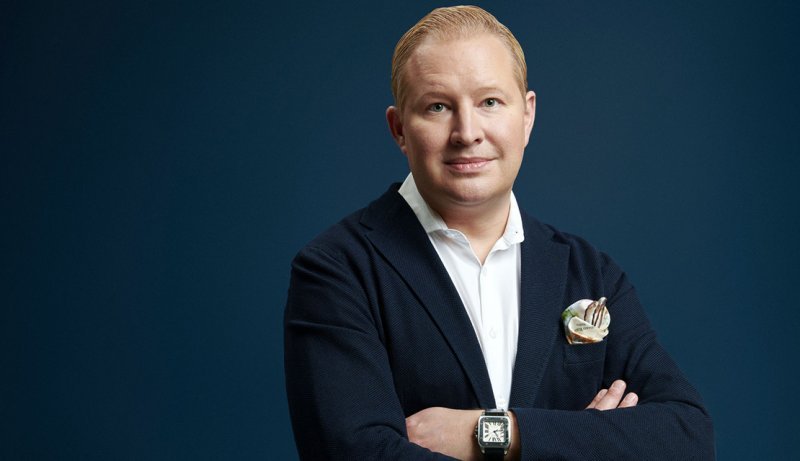
Companies are eager to profile their average customers through market analysis to develop products and sales strategies. But do average customers actually exist?
At least there are less and less of them.
“The bell curve of normal distribution has swung upside down, with more and more people streaming towards the ends of the customer curve”, describes Pekka Mattila, Group Managing Director at Aalto EE and Professor of Practice at Aalto University.
“Average Finns eat margarine and drink low-fat milk. But when looking at real behavior, they consume cream and butter at weekends but stay away from fatty foods during the week. It’s dangerous to rely on the average because behavior breaks down behind it.”
It’s dangerous to rely on the average because behavior breaks down behind it."
Customers know how to specify their needs more and more precisely. They should not be bundled categorically into, say, luxury consumers and misers, as the same consumer can fall into both depending on the product and situation.
“These types of consumers are easily seen as blind fools, but companies operate the same way: they think about where to invest and where to save.”
Behavior that seems contradictory is smart. Consumers are aware which purchases make sense and which do not.
“The sale of cheap chainsaws is based on this. If you want to fell a single tree on your plot of land, why buy an expensive, durable saw. But you may be ready to invest in something important to you.”
According to Mattila, companies need to listen to customers more attentively because they teach valuable lessons. It is particularly rewarding in these exceptional times when consumers and companies may have changed their behavior.
Mattila believes volatile times pose a danger to anyone taking their customers for granted. On the other hand, they offer a chance to snap up more customers.
“The pattern has changed. It’s essential to discover which changes are here to stay. Did, for instance, the great toilet paper rush of spring 2020 change consumer behavior permanently in many households? And where does that change lead? If you have a hundred toilet paper rolls stashed at home, you won’t be needing to nip to the local shop or kiosk for that pricy emergency roll, but wait for an offer and stock up then. How does this affect companies selling toilet paper?”
At first glance, toilet paper may sound like a joke, but it does lead to bigger questions.
“How does our attitude towards the shop space change? Do we still like to hang out there, or will it transform into a type of click and collect point? Or is it a provider of experiences? A sous vide course at 10 am every Tuesday – just think about the items customers would be buying to take home with them.”
Instead of the average customer, Mattila recommends companies to pay increasing attention to the extremes: super customers on the one hand and those who have abandoned the product on the other.
“These customers may know more about the product or service than the manufacturer. All-knowing customers can be a threat to product developers, but used properly, the insights of extreme users can be very useful.”
“Are professionals humble and willing enough to listen to their fans and super customers? It’s a similar scenario to thirty keen amateurs advising a professional musician”, Mattila illustrates.
It is even more important to listen to the fans of the entire category – people who are also buying the products of other companies.
Rather than checking who is buying lawnmowers from us and who from the firm next door, our eyes should be on those who are passionate about mowing."
“Rather than checking who is buying lawnmowers from us and who from the firm next door, our eyes should be on those who are passionate about mowing.”
It is easy to find buffs online, where there is a crowd for every topic under the moon.
According to Mattila, a business could politely ask to join a group if it behaves honestly and well. The situation is socially charged, and by no means should you use a bot to terrorize it. You need to accept that fans may be interested in something totally different in the product than the manufacturer. It calls for tact.
“Analyzing can involve large amounts of data, but communication, marketing, and product development require craftmanship.”
How about those disappointed customers – what can we learn from them?
Customer and sales executives tend to play golf with their best customers. Mattila believes it is more important to spend time with customers with whom there are communication problems, bumps in the road, or difficulties reaching a deal. Or why not play a round of golf to heal customer relationships that withered or broke completely. Therein lie the problem areas of the product or service.
“Experimenting and disappointed customers rarely leave feedback. Why should they waste more time when they already wasted their money? That’s why it is worth paying attention to people who bothered to leave a comment. They have a great deal to say.”
Did you enjoy this long form? If your answer is yes, you can find more long forms here. You can also sign up for our Aalto Leaders' Insight Highlights newsletter to enjoy the fresh stories as well as invitations to free webinars. See more information below.

















